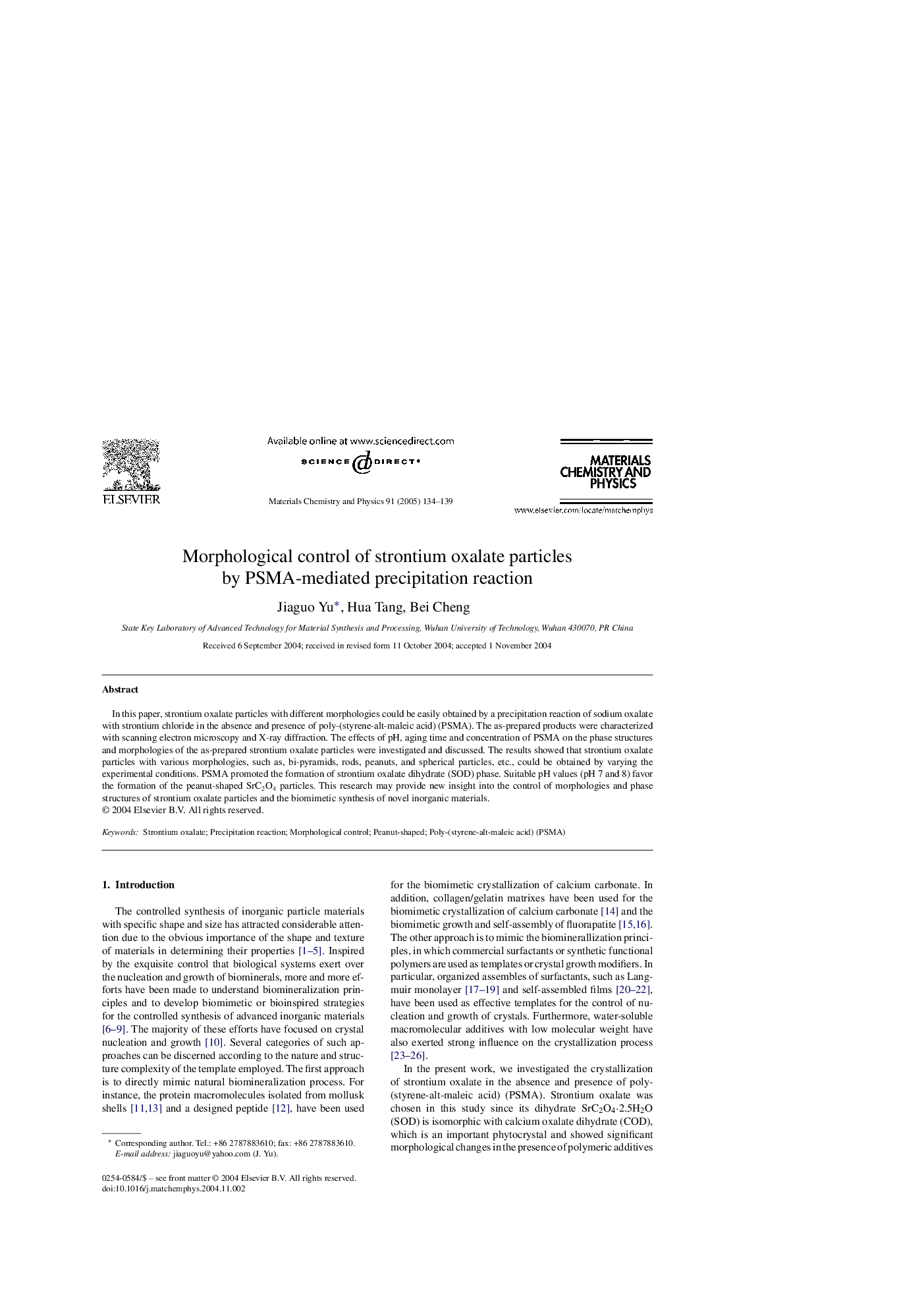| Article ID | Journal | Published Year | Pages | File Type |
|---|---|---|---|---|
| 10638475 | Materials Chemistry and Physics | 2005 | 6 Pages |
Abstract
In this paper, strontium oxalate particles with different morphologies could be easily obtained by a precipitation reaction of sodium oxalate with strontium chloride in the absence and presence of poly-(styrene-alt-maleic acid) (PSMA). The as-prepared products were characterized with scanning electron microscopy and X-ray diffraction. The effects of pH, aging time and concentration of PSMA on the phase structures and morphologies of the as-prepared strontium oxalate particles were investigated and discussed. The results showed that strontium oxalate particles with various morphologies, such as, bi-pyramids, rods, peanuts, and spherical particles, etc., could be obtained by varying the experimental conditions. PSMA promoted the formation of strontium oxalate dihydrate (SOD) phase. Suitable pH values (pH 7 and 8) favor the formation of the peanut-shaped SrC2O4 particles. This research may provide new insight into the control of morphologies and phase structures of strontium oxalate particles and the biomimetic synthesis of novel inorganic materials.
Related Topics
Physical Sciences and Engineering
Materials Science
Electronic, Optical and Magnetic Materials
Authors
Jiaguo Yu, Hua Tang, Bei Cheng,
